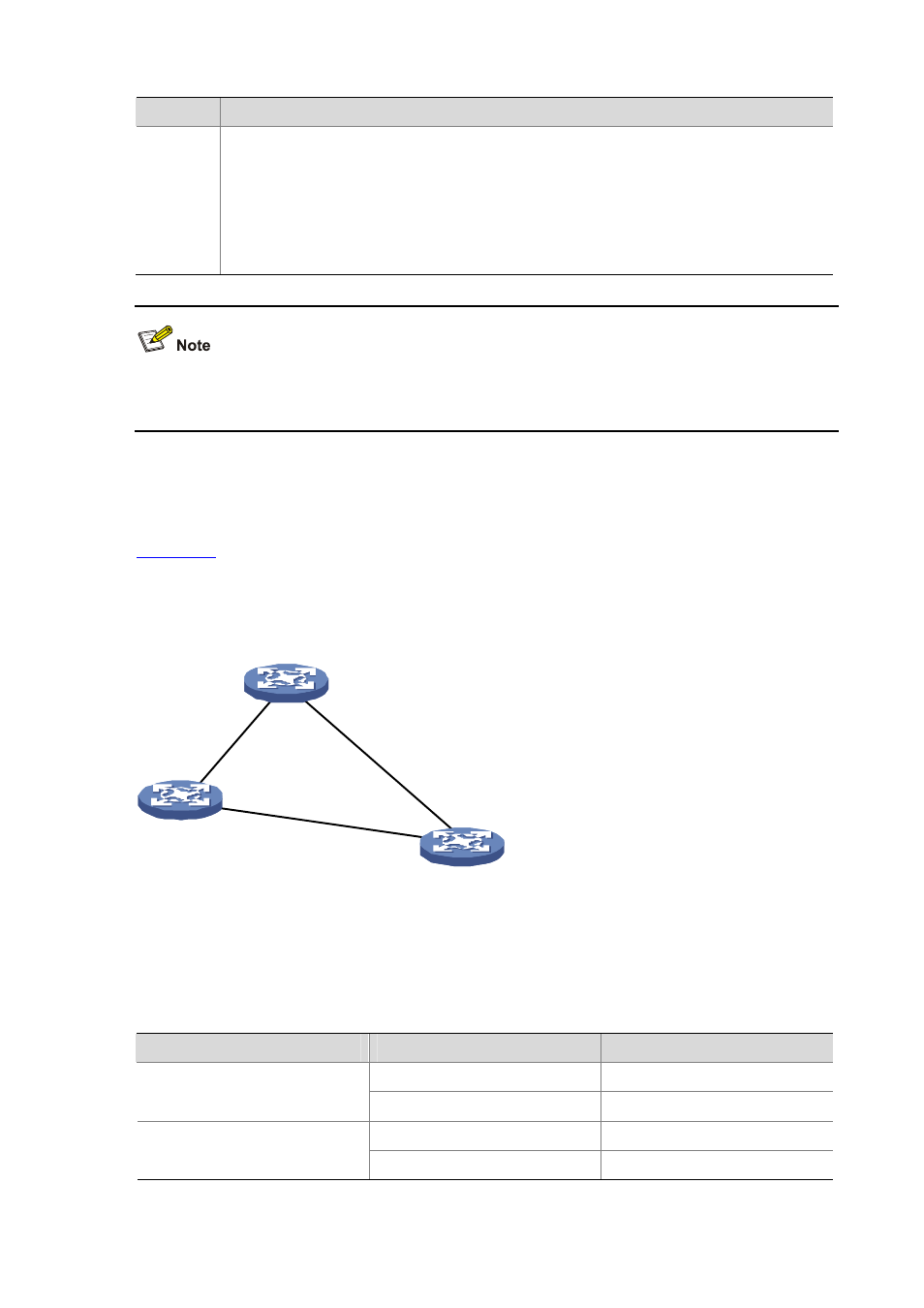H3C Technologies H3C WX3000 Series Unified Switches User Manual
Page 174

22-5
Step
Description
3
The device compares the calculated configuration BPDU with the configuration BPDU on the port
whose role is to be determined, and acts as follows based on the comparison result:
z
If the calculated configuration BPDU is superior, this port will serve as the designated port, and
the configuration BPDU on the port will be replaced with the calculated configuration BPDU,
which will be sent out periodically.
z
If the configuration BPDU on the port is superior, the device stops updating the configuration
BPDUs of the port and blocks the port, so that the port only receives configuration BPDUs, but
does not forward data or send configuration BPDUs.
When the network topology is stable, only the root port and designated ports forward traffic, while other
ports are all in the blocked state – they only receive STP packets but do not forward user traffic.
Once the root bridge, the root port on each non-root bridge and designated ports have been
successfully elected, the entire tree-shaped topology has been constructed.
The following is an example of how the STP algorithm works. The specific network diagram is shown in
. The priority of Device A is 0, the priority of Device B is 1, the priority of Device C is 2, and
the path costs of these links are 5, 10 and 4 respectively.
Figure 22-2
Network diagram for STP algorithm
AP 1
AP 2
Device A
With priority 0
Device B
Device C
BP 1
BP 2
CP 1
CP 2
5
10
4
With priority 1
With priority 2
z
Initial state of each device
The following table shows the initial state of each device.
Table 22-4
Initial state of each device
Device
Port name
BPDU of port
AP1
{0, 0, 0, AP1}
Device A
AP2
{0, 0, 0, AP2}
BP1
{1, 0, 1, BP1}
Device B
BP2
{1, 0, 1, BP2}